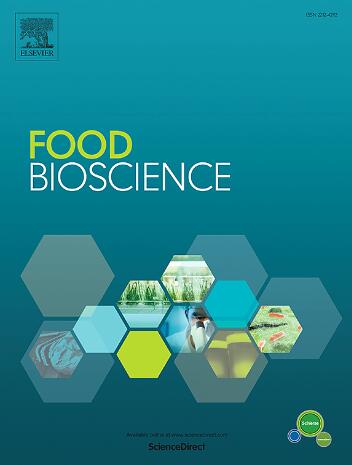天然化合物治疗高尿酸血症的治疗潜力和分子机制
IF 4.8
1区 农林科学
Q1 FOOD SCIENCE & TECHNOLOGY
引用次数: 0
摘要
高尿酸血症(HUA),以血清尿酸(SUA)水平升高为标志,是一种与痛风和慢性疾病(如心血管疾病和恶性肿瘤)相关的普遍代谢紊乱。合成药物,包括黄嘌呤氧化酶抑制剂和尿嘧啶药物,可以有效地降低SUA,但通常会导致胃肠道不适、过敏反应和肾毒性等副作用。相比之下,类黄酮和多酚等天然物质已经证明能够降低UA水平,减轻炎症,而且副作用更少,这促使人们对它们的治疗潜力产生了兴趣。本文综述了HUA的治疗策略,探讨了合成药物和天然药物的机制、疗效和安全性。药理学治疗的最新进展,包括新的药物输送系统,以及来自植物、真菌和海洋生物的生物活性化合物。此外,本文创新性地总结了近年来关于传统药物与天然物质在新型治疗框架下协同作用的研究,证实了这种协同作用可以在降低药物毒性的同时保持对血尿酸的靶向控制。这一发现为优化现有的治疗方案开辟了新的途径,为提高治疗效果和减少不良反应提供了新的方向。它特别强调了金属络合等制药技术如何解决天然产品的低生物利用度问题。这种综合的观点强调了将现代药理学进步与天然物质相结合的重要性,为开发更安全、更有效的HUA治疗方法铺平了道路。本文章由计算机程序翻译,如有差异,请以英文原文为准。

Therapeutic potential and molecular mechanisms of natural compounds for managing hyperuricemia
Hyperuricemia (HUA), marked by elevated serum uric acid (SUA) levels, is a prevalent metabolic disorder associated with gout and chronic conditions such as cardiovascular diseases and malignancies. Synthetic drugs, including xanthine oxidase inhibitors and uricosuric agents, effectively lower SUA but often lead to side effects such as gastrointestinal distress, allergic reactions, and renal toxicity. In contrast, natural substances like flavonoids and polyphenols have demonstrated the ability to reduce UA levels and alleviate inflammation with fewer adverse effects, driving interest in their therapeutic potential. This review comprehensively explores HUA treatment strategies, examining the mechanisms, efficacy, and safety of synthetic drugs and natural substances. Recent advancements in pharmacological therapies, including novel drug delivery systems, are highlighted alongside bioactive compounds from plants, fungi, and marine organisms. In addition, this review innovatively summarizes recent studies on the synergistic effects between traditional drugs and natural substances within novel therapeutic frameworks, confirming that such synergism can reduce drug toxicity while maintaining targeted blood uric acid control. This discovery has opened new avenues for optimizing existing treatment protocols, providing fresh directions for enhancing therapeutic efficacy and minimizing adverse effects. It particularly highlights how pharmaceutical technologies such as metal complexation can address the low bioavailability issues of natural products. This integrative perspective underscores the importance of combining modern pharmacological advancements with natural substances, paving the way for the development of safer and more effective treatments for HUA.
求助全文
通过发布文献求助,成功后即可免费获取论文全文。
去求助
来源期刊

Food Bioscience
Biochemistry, Genetics and Molecular Biology-Biochemistry
CiteScore
6.40
自引率
5.80%
发文量
671
审稿时长
27 days
期刊介绍:
Food Bioscience is a peer-reviewed journal that aims to provide a forum for recent developments in the field of bio-related food research. The journal focuses on both fundamental and applied research worldwide, with special attention to ethnic and cultural aspects of food bioresearch.
 求助内容:
求助内容: 应助结果提醒方式:
应助结果提醒方式:


